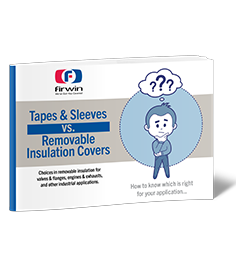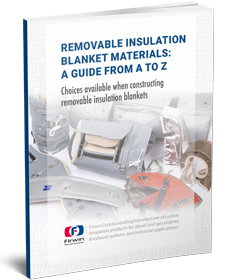Exhaust and Steam Line Insulation
Heat loss from engine exhausts, piping, silencers, steam piping systems, etc can be dramatically reduced with insulation.
Due to the narrow confines of Engine rooms, galleys and gangways on board, in the interests of safety and good working environments insulation is critical for personnel protection, reduction of ambient heat load, protection of heat sensitive sensors and equipment, fire prevention, and maximizing the effectiveness of exhaust catalytic purifiers/filters.
There are basically two groups of Insulation applications
Sound Attenuation
The fibrous nature of some of the insulation materials used for heat insulation is also a sound absorber, with a Noise Reduction Coefficient rating of .75 for 1” inch. This characteristic can be improved upon by using dense membranes in composite layers. It is important to use composites that fall within the fire safety standards required.
Heat loss from engine exhausts, piping, silencers, steam piping systems, etc can be dramatically reduced with insulation.
Due to the narrow confines of Engine rooms, galleys and gangways on board, in the interests of safety and good working environments insulation is critical for personnel protection, reduction of ambient heat load, protection of heat sensitive sensors and equipment, fire prevention, and maximizing the effectiveness of exhaust catalytic purifiers/filters.
There are basically two groups of Insulation applications
- Permanent
- Removable
- Permanent is ideal for long pipe runs but not for any application where ease of removal for maintenance and/or inspection is essential. Permanent insulation is routinely installed by an outside contractor and is messy to remove and difficult to replace. This type of insulation is cut and fitted on site. It meets Coast Guard, UL, Lloyds and DNV requirements.
- Removable/Reusable Insulation is made up in convenient sized panels or sections, and can be easily installed or removed by your own crew - only sufficient blankets have to be removed to enable a particular maintenance or inspection job to be done.
Sound Attenuation
The fibrous nature of some of the insulation materials used for heat insulation is also a sound absorber, with a Noise Reduction Coefficient rating of .75 for 1” inch. This characteristic can be improved upon by using dense membranes in composite layers. It is important to use composites that fall within the fire safety standards required.
Unit of Measure



